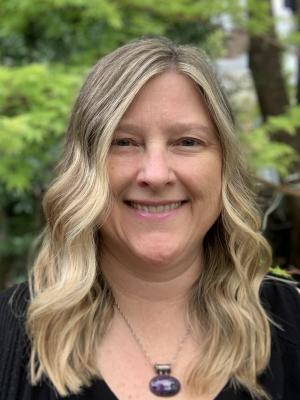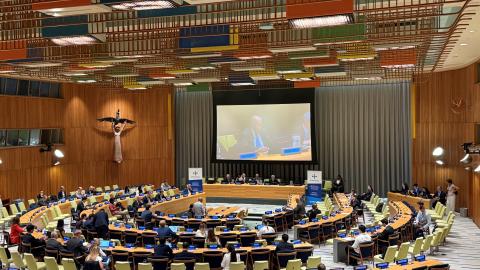
Tania Busch Isaksen, PhD, MPH is a CHanGE faculty member and teaching professor in the Department of Environmental and Occupational Health Sciences at the UW. She has focused her academic career on addressing the health impacts of extreme weather, with a focus on extreme heat and wildfire smoke. Her passion was sparked by personal experiences watching her children play soccer at dangerously high temperatures. She advocated for better preparedness among coaches and even conducted her own research, which led to surprising findings about what groups are most vulnerable during extreme heat events. Today, her work extends beyond identifying risks, exploring the nuances of community readiness, and developing place-based interventions.
Uncovering hidden risks
Busch Isaksen conducted her doctoral research on extreme heat morbidity and mortality outcomes associated with different age groups in King County. In the early 2010s, much of the existing literature pointed to adults over 85-years-old as the primary group at risk from extreme heat. But Busch Isaksen’s research highlighted another demographic experiencing negative health outcomes.
"We found consistently ... that the 45–64-year-old age group is at an increased risk for mortality and a variety of morbidity-associated health outcomes due to extreme heat," Busch Isaksen says.
She suspects that individuals in this middle-age group may not perceive themselves as particularly vulnerable to extreme heat. As such, this age group is likely still engaging in many outdoor activities they did in their younger years without the necessary exposure reduction precautions. They may not be as resilient as they once were and could be experiencing increased comorbidities associated with aging, underlying health conditions, or use of certain medications that impact thermoregulation.
The importance of risk communication

Washington state has made major strides in preparing for extreme heat and wildfire smoke. Busch Isaksen points to significant progress in risk communication, policy protections, and public health interventions. “We’ve worked hard to communicate the risk and provide effective intervention options to individuals who want to reduce their exposure, and there has also been a lot of work done on the policy side,” she notes. She emphasized the importance of policies through Washington State Labor and Industries, which has implemented a heat rule and a wildfire smoke rule for outdoor workers.
She sees movement and many beneficial public health interventions happening around both extreme heat and wildfire smoke. Her own collaborations through the lab she co-directs with Nicole Errett, PhD, MSPH, the Collaborative on Extreme Event Resilience (CEER), have helped drive this progress. For example, Busch Isaksen currently partners with Gonzaga University’s Institute for Climate, Water, and the Environment, directed by Brian Henning, PhD, to better understand how communities are affected by both heat and smoke and identify the most effective interventions to reduce health risks. Her group has led two community-wide symposiums on heat and wildfire smoke that brought together practitioners, media, researchers, and clinicians to shape research priorities on health impacts, interventions, and communication strategies for the City of Spokane.This fall, the CEER team will continue their work in the Spokane area, leading two Community Assessment for Public Health Emergency Response (CASPER) survey collection events. These surveys aim to identify risk perceptions, behaviors, intervention uptake, and communication campaign reach at the household level for both the City of Spokane and Spokane Valley. "Information collected using the CASPER sampling method will allow us to generalize the results to the entire sample frame and thus provide Gonzaga’s Climate Institute and the City and County of Spokane with rich data to use in their emergency preparedness planning efforts,” she says.
A place-based path forward
A core principle in Busch Isaksen’s work is that responses to extreme weather events must be rooted in the location. “You really need to understand the place in which you are trying to prevent or reduce risk,” she says. That’s because how communities experience and respond to extreme heat or wildfire smoke varies widely depending on geography, infrastructure, and behaviors.
Take heat exposure in Seattle and Phoenix as an example. In Phoenix, most people are acclimatized, meaning they are used to extreme heat. Phoenix residents often also have air conditioning and don’t leave the house without a water bottle. On the other hand, Seattle residents experience extreme heat less frequently and may not be informed of resources or behavior they can use to protect themselves.
This means public health responses and epidemiological research can’t simply borrow from other cities or regions. Solutions must reflect local context, such as housing options, access to cooling or filtration resources, and behaviors. “There isn’t a one-size-fits-all approach,” says Busch Isaksen.
Still, she remains hopeful about what is ahead. “We already have solutions to most of our problems,” she says. The challenge now is ensuring those solutions are accessible to everyone and backed by policies that reduce the long-term harm of extreme weather events. Busch Isaksen also sees promise on the economic side of climate action. “The argument that the economy needs to suffer in order to make meaningful progress toward decarbonization, is absolutely untrue,” she says, pointing to job growth in solar, wind, and other clean energy sectors. For those ready to innovate, she adds, “it can be a lucrative opportunity for entrepreneurs who are ready to take on the challenge.”
- Faculty Spotlight
- Heat
